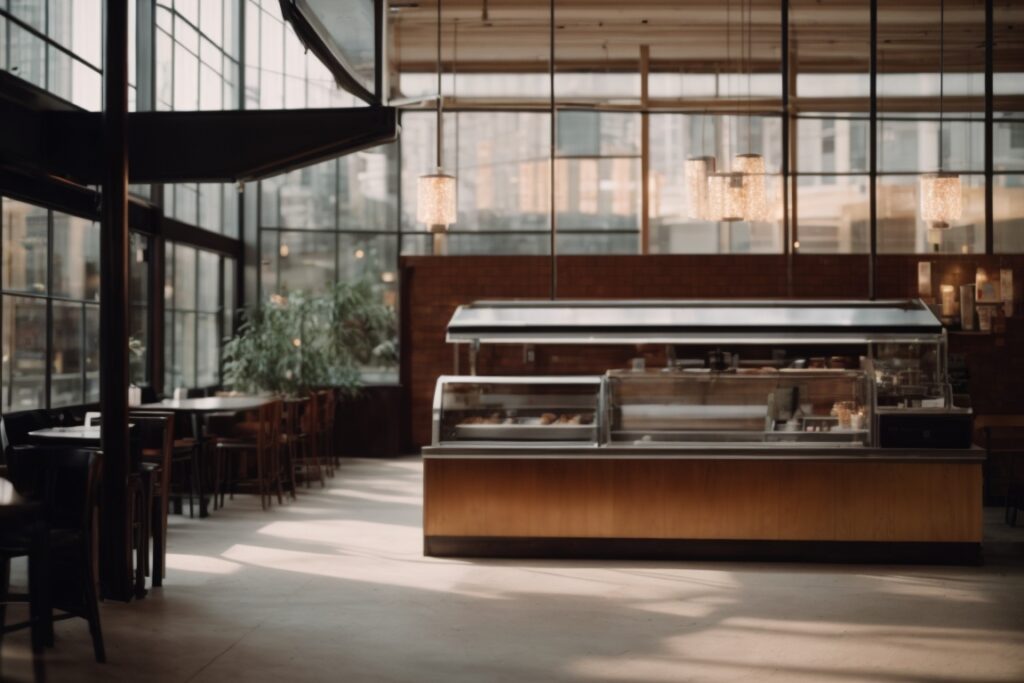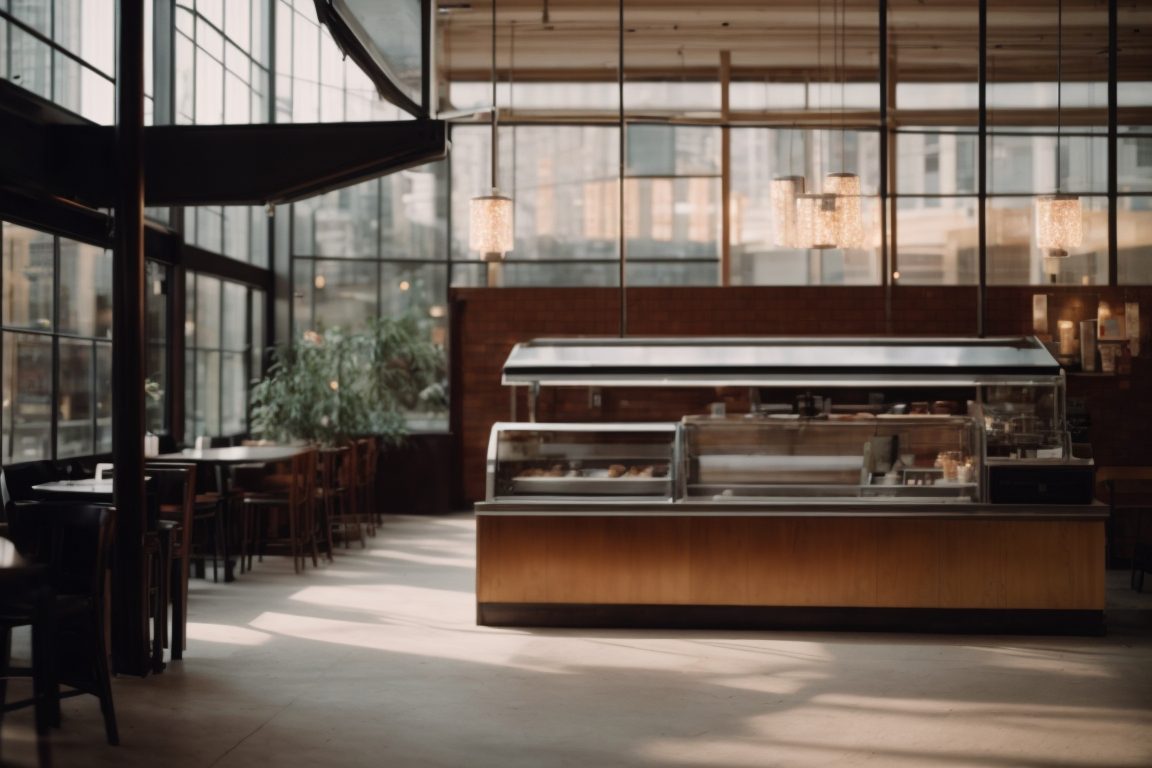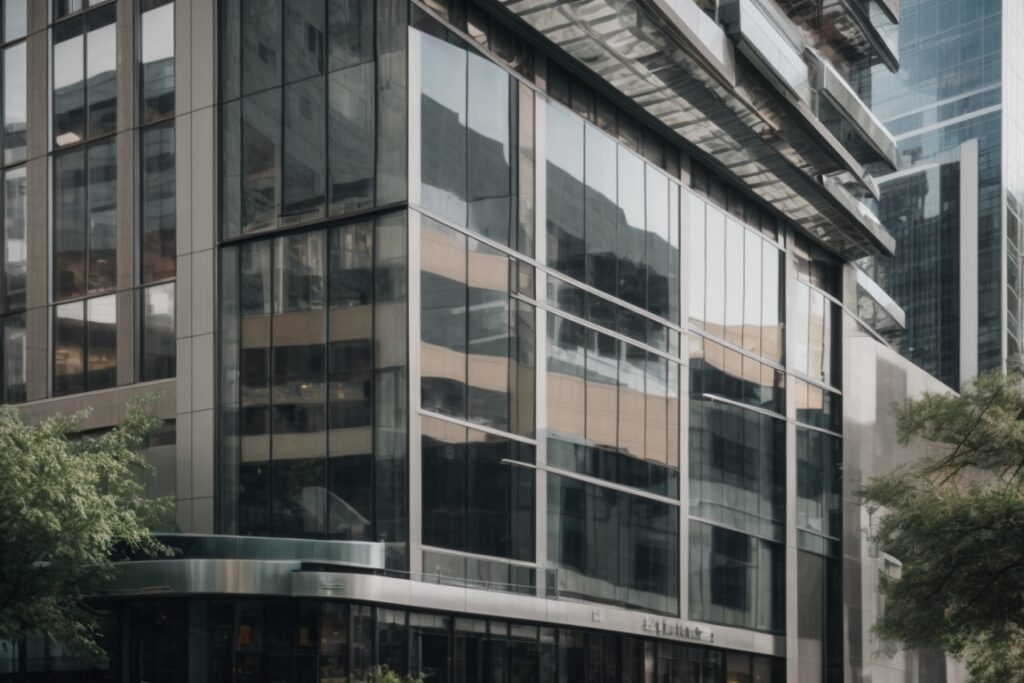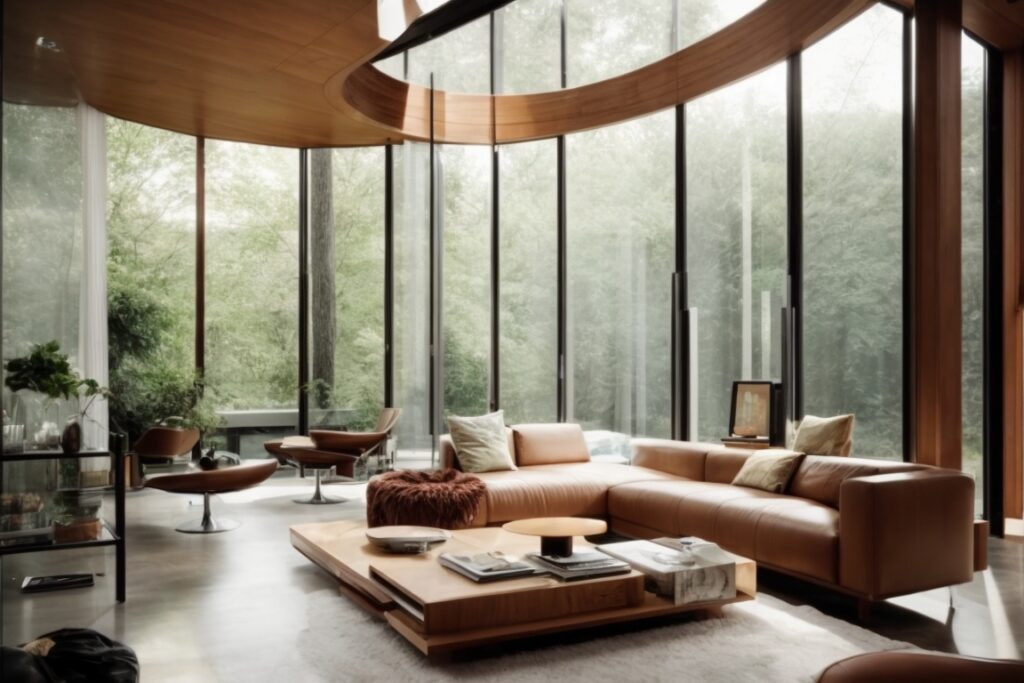
Discover the Impact of Low-E Glass Film on Chicago’s Energy Bills
Chicago’s climate — with its harsh winters and sweltering summers — presents unique challenges for homeowners and businesses alike, particularly in terms of energy consumption. High utility bills are a common headache, year-round. In this scenario, an innovative and eco-friendly solution like low-e glass film is gaining traction. This advanced window film technology enhances the energy efficiency of buildings significantly, but awareness about its benefits and potential savings remains relatively low among Chicago property owners.
Low-e glass film, short for low-emissivity glass film, is specifically designed to minimize the amount of infrared and ultraviolet light that passes through glass without compromising the amount of natural light that enters. During winter, it helps keep heat inside the building, reducing the need for heating. Conversely, in the hotter months, it reflects external heat away, thereby reducing cooling requirements. This dual action makes it a year-round asset to any property in Chicago looking to cut down on energy costs.
The gradual shift towards green building practices and sustainable living in Chicago marks an essential step for the community, yet the adoption of technologies like low-e glass film is not as widespread as it could be. Educating the locals on how such simple modifications can result in substantial energy cost savings and contribute to environmental conservation is imperative. It raises a crucial question: how can we better inform Chicago residents and businesses about the practicality and benefits of incorporating low-e glass film into their buildings?
Understanding the Impact of Low-E Glass Film in Chicago
In bustling cities like Chicago, managing energy costs and maintaining comfortable living and working environments are ongoing challenges for homeowners and businesses. The primary issue is the significant energy loss experienced through windows, which are crucial for natural light but can be a major source of heat gain in summer and heat loss in winter. This not only affects comfort but also leads to high utility bills that can strain any budget.
Low-E glass film offers a promising solution to this dilemma by improving the thermal efficiency of existing windows. Although this technology is readily available, many in Chicago have yet to fully embrace or understand its benefits. This gap in adoption stems from a lack of awareness about how effectively these films can reduce energy consumption and thereby enhance the sustainability of properties in a city known for its variable climate. The issue here is not just one of energy efficiency but also of financial savings and environmental responsibility.
Surprising Statistics on Energy Savings with Low-E Glass Film in Chicago
In Chicago, homes and businesses with low-e glass film have witnessed impressive reductions in energy expenditures. Studies indicate that low-e glass implementations can lead to a significant 30% decrease in energy used for heating and cooling. This is vital considering Chicago’s harsh winters and hot summers, where energy demands are among the highest. Moreover, the installation of low-e glass film contributes to a marked 25% reduction in UV radiation entering the building, protecting interiors and reducing the need for frequent renovations due to sun damage.
The Costly Inefficiency of Traditional Glass in Chicago’s Climate
For many homeowners and business owners in Chicago, the enduring battle with utility bills remains a pressing concern largely exacerbated by traditional glass windows. These conventional glass installations offer minimal insulation and poor thermal resistance, which is a substantial drawback given Chicago’s extreme seasonal temperatures. The reliance on such materials may have been innocuous in the past, but it now poses a significant financial drain for property owners.
In winter, traditional glass windows allow too much heat to escape, forcing heating systems to work overtime to maintain a comfortable indoor temperature. This continuous strain not only spikes energy consumption but also leads to increased utility expenses. Conversely, during the sweltering summers, these windows fail to adequately block the infrared rays, causing interiors to heat up rapidly and air conditioning systems to engage more frequently and vigorously than would otherwise be necessary. This repeated cycle results in soaring energy costs, which can be particularly straining for small businesses operating on tight margins and homeowners juggling other financial responsibilities.
The issue extends beyond mere financial implications; it also affects the environmental footprint of each building and the comfort level of its occupants. The inability of traditional glass to effectively manage interior climates can lead to inconsistent temperatures, causing discomfort for inhabitants and potential damage to sensitive items within buildings like electronics and artwork, that react poorly to temperature fluctuations. Therefore, the continuous use of outdated glass technology in Chicago’s unique climatic conditions is not just about discomfort or higher financial outlays, but also about broader environmental impacts and the preservation of interior spaces.
Understanding the Problem: Chicago’s Overlooked Energy Waste from Window Heat Transfer
In Chicago’s varied climate, which swings from frigid winters to hot, sunny summers, maintaining a comfortable indoor temperature can be a constant struggle. This battle has significant implications for energy consumption and utility bills in both homes and businesses. Central to this issue is an often-overlooked factor: inefficient window installations. Ordinary glass windows can allow an excessive heat exchange between the indoor and outdoor environments, demanding more from heating and cooling systems, thus increasing energy costs.
Chicagoans might not realize how much energy their windows are wasting. Glass surfaces without any insulation enhancements like low-e glass film allow a large amount of ultraviolet and infrared light to pass through, which heats up indoor spaces in the summer and lets heat escape during the winter. This additional strain not only leads to higher utility bills but also contributes to the wear and tear of HVAC systems, compounding maintenance costs over time. Understanding this dynamic is essential for recognizing the real impact of window efficiency on a property’s energy management and overall expenses.
Energy Savings with Low-E Glass Film in Chicago’s Local Coffee Shop
A popular Chicago coffee shop faced steep heating bills every winter. After installing low-e glass film, they noticed a substantial reduction in their utility costs. Within the first year, the savings amounted to over 20% of their previous energy expenses, proving the efficacy of low-e glass film in urban business settings.
The Cost of Overlooking Low-E Glass Film in Chicago
Ignoring the installation of low-e glass film in Chicago homes and businesses can lead to several detrimental impacts, especially considering the city’s varied climate. The decision to forego this energy-efficient upgrade is not just a missed opportunity for saving on utility bills, but it forms a bigger problem that affects both financial health and environmental responsibility.
Primarily, the absence of low-e glass film results in higher energy consumption. Windows without this film lose more heat in winter and gain more heat in summer, forcing heating, ventilation, and air conditioning systems to work harder. This not only increases monthly utility costs but also contributes to more frequent maintenance or replacement of HVAC systems due to overuse.
Moreover, the continual fluctuation in indoor temperatures due to inefficient windows can cause discomfort for occupants. In the long term, ignoring the benefits of low-e glass film might also affect the property value, as more buyers and renters now prioritize energy efficiency in their living spaces. Thus, not adapting to this energy-efficient solution could substantially lower a property’s market appeal and value over time.
Economic Impacts of Low-E Glass Film in Chicago
In Chicago, employing low-e glass film in homes and businesses directly impacts economic security by significantly reducing energy costs. This special window film improves insulation, consequently decreasing the need for excessive heating during the city’s harsh winters, and less air conditioning in the summers. Over time, the savings on utility bills accumulate, providing a financial relief that can be better allocated to other necessary expenses or investments. The initial cost of installing low-e glass film is quickly offset by these substantial energy savings.
Low-E Glass Film as a Solution for Chicago’s Climate
In the challenging and diverse climate of Chicago, where residents face harsh winters and hot summers, low-e glass film serves as an essential solution for both homes and businesses looking to enhance energy efficiency and comfort. The strategic positioning of low-e glass film centers on its ability to address and mitigate the common problems associated with the city’s temperature fluctuations.
Low-e glass film helps maintain a consistent indoor temperature by reflecting interior temperatures back inside during winter and blocking out excessive heat during summer. This dual-action capability significantly reduces the need for continuous heating and cooling, which can lead to substantial savings on utility bills. This reduction in energy consumption is not only beneficial for the wallet but also for the environment, making it a responsible choice for the eco-conscious Chicagoan.
Moreover, the installation of low-e glass film is a cost-effective upgrade compared to complete window replacements. For older buildings in Chicago, which are often subject to energy loss, the film offers a practical upgrade that avoids the high costs and extensive labor involved in window replacements. This practicality is particularly appealing to both homeowners and business owners in the city who are looking for quick, efficient solutions to their insulation needs without significant upfront investments.
By emphasizing these benefits, low-e glass film is positioned as a smart investment for anyone in Chicago looking to enhance the comfort and energy efficiency of their property. This innovative product not only addresses the immediate needs concerning temperature regulation and energy costs but also adds value to properties by upgrading their window systems in an economically and environmentally sensible way.
Enhancing Chicago’s Energy Efficiency with Low-E Glass Film
Low emissivity (low-E) glass film is a revolutionary product that garners significant attention for its ability to improve energy efficiency in Chicago’s residential and commercial buildings. By applying this micro-thin coating to existing windows, this solution effectively reduces energy costs while maintaining indoor comfort throughout the diverse Chicago seasons.
The principal function of low-E glass film is its capacity to reflect and absorb infrared radiation, thus preventing unwanted heat gain during the summer and retaining interior warmth during the winter. This dual action not only helps in stabilizing indoor temperatures but also dramatically cuts down on the need for excessive heating and cooling. For a city like Chicago, where weather conditions can drastically change, low-E glass film offers an adaptable and efficient solution to manage energy consumption and greatly reduce utility bills.
Moreover, the addition of low-E glass film does not compromise natural light entry or visibility, making it an ideal choice for enhancing the energy performance of glass without altering aesthetic or architectural integrity.
Benefits and Features: Low-E Glass Film in Chicago
Low-E glass film provides several impactful benefits for Chicago homeowners and businesses. Primarily, it enhances energy efficiency by reflecting interior temperatures back inside, reducing the need for excessive heating in winter and air conditioning in summer. This adjustment leads to significant reductions in utility bills. Additionally, Low-E glass film blocks harmful UV rays, preventing furniture and fabrics from fading. Its easy installation over existing windows also makes it a cost-effective upgrade for any building.
Testimonials: Real Savings with Low-E Glass Film in Chicago
Many Chicago homes and businesses have seen remarkable benefits from installing low-e glass film, not just in comfort but also in tangible financial savings. One compelling story comes from the Anderson family in Lincoln Park, who noticed immediate changes after retrofitting their home with low-e glass film. “Our energy bills dropped by about 25% during the winter months,” Mrs. Anderson enthusiastically reports. “It’s like the film insulated our windows against Chicago’s biting cold without darkening the room, making it cozy and economical.”
Similarly, the Pearl Bistro, a locally loved cafe in River North, shared their testimonial about the transformative impact of low-e glass film on their establishment. The owner, Mr. Thompson, states, “Replacing our old windows with low-e glass film was initially just about reducing sun glare for the comfort of our guests. However, we were pleasantly surprised when we saw our air conditioning costs had gone down significantly during the hot summer months. It keeps our cafe cooler without needing to crank up the AC.” These stories among Chicago residents and business owners underscore the practical benefits and cost savings provided by low-e glass film installations.
Case Study: Impact of Low-E Glass Film on Chicago-Based Business
A mid-sized retail store in Chicago improved their building’s energy efficiency remarkably by installing low-e glass film on their storefront windows. This simple change led to a 20% reduction in their monthly utility bills during the winter months due to decreased heat loss. As a result, the store maintained a comfortable shopping environment with less dependence on heating systems. Let this story inspire you to enhance your property’s energy efficiency. Contact us today to explore the benefits of low-e glass film for your home or business.







About The Author: Mike Kinsey
Mike Kinsey has more than a decade of experience installing window film in the Chicago area. His years of experience have allowed him to develop a deep familiarity with all of the different types and styles of window film on the market including the various security, privacy, decorative, and energy efficient options. Together, he and his team have completed hundreds of commercial and residential installs, totaling an accumulation of over 250,000 square feet. In addition to being an expert on top brands such as LLumar, C-Bond, HDClear, Solar Gard, Solyx, and Huper Optik, Mike is also certified by 3M, EnerLogic, and AIA for continuing education.
More posts by Mike Kinsey